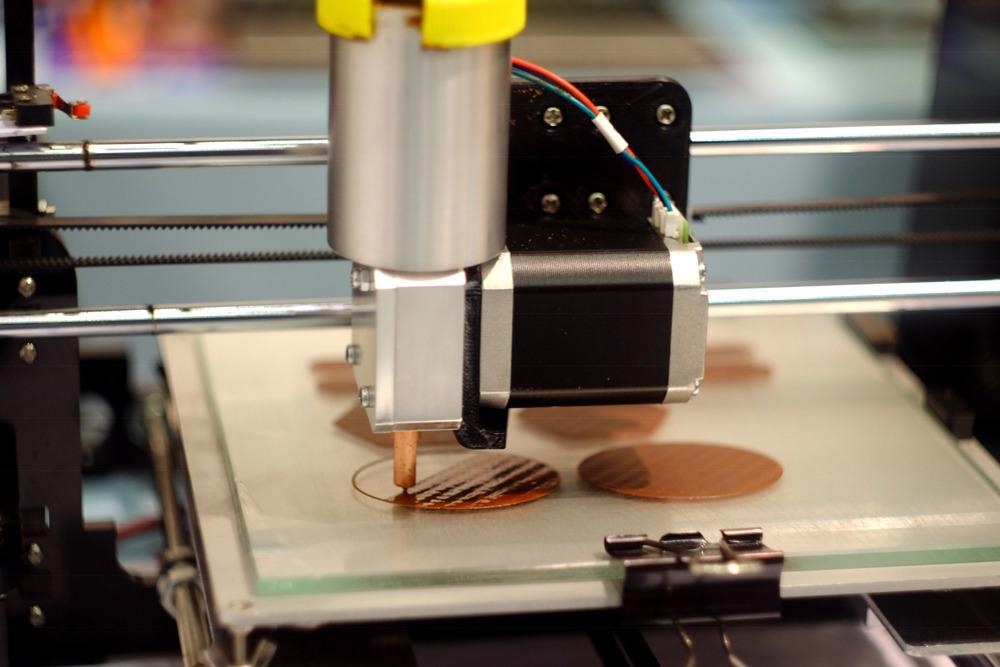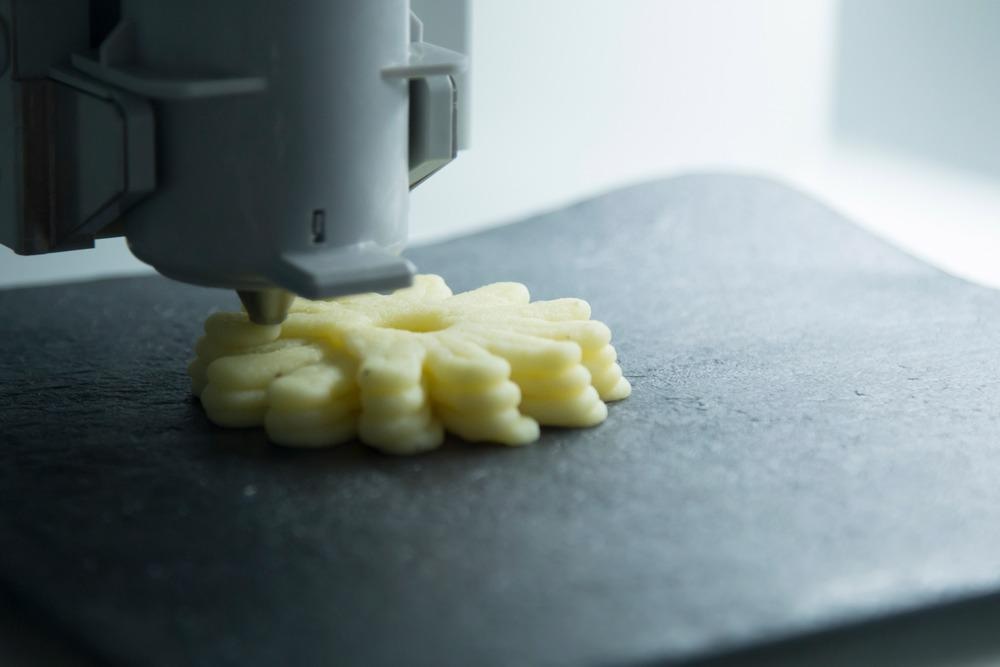3D printing technology has developed quickly and drastically over the past decades. With global food insecurity a growing concern, this article considers the development of 3D printed food, where this process stands in 2022, and the next steps for this technology.

Image Credit: Maksym Kaharlyk/Shutterstock.com
Food insecurity is one of the greatest challenges the world faces today. For decades we have fought to end hunger, however, numbers of those going hungry each year continue to rise. In 2020, it was estimated that between 720 and 811 million people around the world suffered from hunger. Before this, from 2014 to 2019, figures had remained fairly unchanged, rising by 118-161 million in 2020 partially due to the Covid-19 pandemic.
The situation is predicted to remain a global issue unless drastic changes are made, by 2030 it is estimated that 660 million people will still face hunger. Additionally, a large portion of the planet are lacking access to adequate food. While they may not be counted as those going hungry, this group is failing to access sufficient nutrition to meet basic health needs. In 2020, one in three people around the world fell into this category of moderate to severe food insecurity, which has been a growing problem since 2016.
Scientists have been innovating ways to overcome food insecurity for current generations and those to come. One promising development has been that of 3D printed food. The innovation, which adapts the additive manufacturing technique for use with food can cut food waste by producing tailored portion sizes and meet the growing demand for meat alternatives.
Additionally, with its minimized logistical concerns and reduced costs, 3D printing could offer a solution to providing food to locations devastated by natural disasters.
How Does 3D Printed Food Work and How Much Can It Produce?
In some ways, 3D printing food works in a similar way to 3D printing inedible objects with a fused deposition modeling (FDM) printer. It uses a viscous material (food item) and deposits it layer by layer to create the final food product. In other ways, 3D printing food is far more complicated than 3D printing with other materials.
First, there is usually more than one material (ingredient) involved. Second, the materials are usually more complex in terms of their form and behavior. Third, the materials generally interact with each other so this must be taken into account. Finally, 3D printing of food usually involves an extra step of cooking while printing, which is usually achieved with a laser.
While not all final food products created with 3D printing are ready to eat and require heating in a conventional oven, many are made to be instantly consumable. Technologies that have been so far adapted to create 3D printed food include selective sintering, selective hot air sintering and melting (SHASAM), liquid binding or binder jetting, and hot-melt extrusion.
With regular 3D printing, the process is most often used for producing one-offs and small batches rather than larger production runs required for mass-produced products. However, as the technology develops, it is being used more frequently for larger production runs. In terms of how much food can be produced via 3D printing, the answer would be related to the particular scenario for which the food was being produced.
Commercial food 3D printers may just make enough for an individual family; industrial printers may take over production lines and mass-produce items.

3D printed mashed potato. Image Credit: foto_diego/Shutterstock.com
When Was the First 3d Printed Food Created?
3D printing was created in 1986, but it wasn’t until 20 years later, in 2006, that the Fab@Home printer was launched that was able to print food items.
What Are the Advantages and Limitations of 3D Printed Food?
There are many benefits to embracing 3D printed food technology. First, it can reduce food waste, thus addressing the food insecurity issue, by producing precise food quantities. The technology can further address food insecurity by presenting less attractive food sources in a more attractive way, enhancing the consumption of foods that may often go to waste. 3D printing also opens up the opportunity of customizing mass-produced food items.
While there are many advantages to the emerging technology, there are also some limitations to consider. For example, some printers can take a considerable amount of time to produce simple food items, which limits the scalability of the technology. Additionally, the upfront costs are still relatively high and will need to be reduced before wide-scale adoption of 3D printed food can be achieved.
Where Are We Now in 2022 and What Is Coming Next?
Currently, 3D printed food is still in its early stages and more development is needed before it can reach its full potential. Scientists will have to address the limitations of current technology so that a range of food items can be produced quickly and cheaply. Now, only paste-like inputs such as purées and mousses can be used to create 3D printed food, which limits the type of end products that can be created.
The current market value is growing at an annual rate of 46% and is expected to reach a value of $525.6 million by next year. To encourage this growth, efforts must be made to raise awareness of the benefits of the technology among key industry players.
References and Further Reading
Joseph Flynt. 2021. Can 3D Printing Really Help Solve World Hunger? [Online]. 3Dinsider. Available at: https://3dinsider.com/3d-printing-world-hunger/ Accessed February 2022
Lucas Carolo. 2021. 3D Printed Food: All You Need to Know in 2021. [Online]. All3DP. Available at: https://all3dp.com/2/3d-printed-food-3d-printing-food/ Accessed February 2022
Mark Crawford. 2019. Solving World Hunger with 3D-Printed Food. [Online]. ASME. Available at: https://www.asme.org/topics-resources/content/solving-world-hunger-3dprinted-food Accessed February 2022
Disclaimer: The views expressed here are those of the author expressed in their private capacity and do not necessarily represent the views of AZoM.com Limited T/A AZoNetwork the owner and operator of this website. This disclaimer forms part of the Terms and conditions of use of this website.